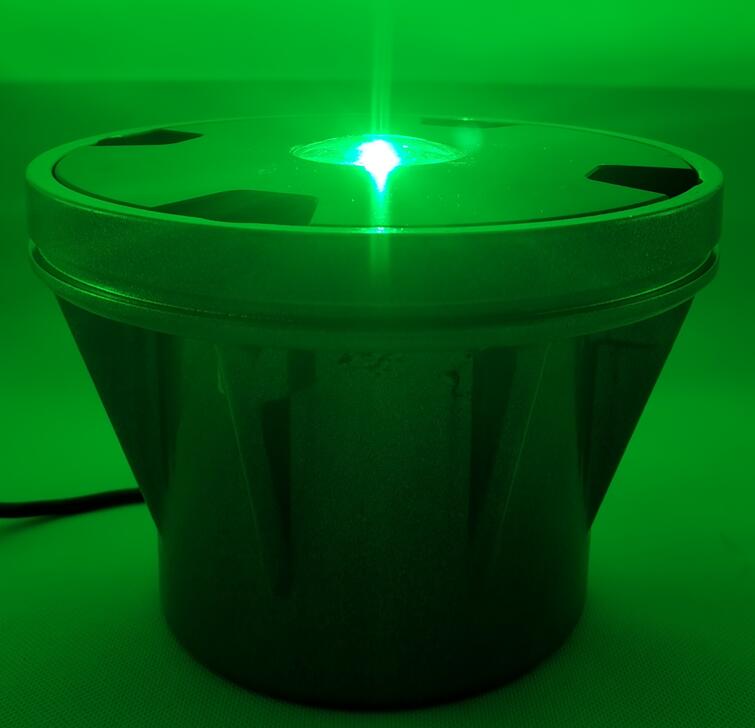Helipad Light Systems: Illuminating Safe Vertical Aviation Operations
As helicopter operations increase in medical, commercial, and military applications, proper helipad light systems have become essential for ensuring safe landings and takeoffs, especially during nighttime or low-visibility conditions. These lighting solutions guide pilots with precision while complying with strict aviation regulations. This article examines the critical role of helipad lights, their different types, technological advancements, and best practices for installation and maintenance.
The Importance of Helipad Lights
Helicopters require precise navigation when approaching landing zones, particularly in urban environments, remote areas, or emergency scenarios. A well-designed helipad light system provides:

Clear Visual Guidance – Helps pilots identify the landing zone from a distance.
Obstruction Avoidance – Marks boundaries and potential hazards around the helipad.
| helipad light |
Regulatory Compliance – Meets FAA, ICAO, and other aviation authority requirements.
Without proper lighting, the risk of accidents increases significantly, making helipad lights a non-negotiable safety feature.
Types of Helipad Lights
1. Perimeter Lights
These define the edges of the helipad, typically emitting steady white or green light. They help pilots gauge the landing area’s dimensions.
| helipad lights |
2. Floodlights
Used to illuminate the entire landing surface, floodlights ensure visibility in dark environments. Some systems include dimming controls to avoid blinding pilots.
3. Approach Path Lights
Positioned along the approach direction, these guide pilots during final descent. They are often green or white and may include sequenced flashing for enhanced visibility.
4. Wind Direction Indicators (Windsocks) with Lights
Lighted windsocks assist pilots in assessing wind conditions, crucial for safe landings.
5. Emergency & Hazard Lights
Red flashing lights indicate restricted areas or emergencies, ensuring pilots avoid dangerous zones.
Key Features of Modern Helipad Lights
LED Technology – Energy-efficient, long-lasting, and highly visible even in adverse weather.
Solar-Powered Options – Ideal for remote locations without direct power access.
Durability – Weather-resistant materials (e.g., polycarbonate, aluminum) ensure performance in extreme conditions.
Regulatory Compliance – Meets FAA AC 150/5390-2C and ICAO Annex 14 standards.
Low Glare Design – Prevents pilot disorientation while maintaining visibility.
Applications Across Industries
1. Hospital Helipads
Medical evacuation helicopters rely on helipad lights for quick, safe landings in emergencies.
2. Offshore Platforms
Oil rigs and marine vessels use specialized helipad lights resistant to saltwater corrosion.
3. Urban Rooftop Helipads
High-rise buildings in cities require precise lighting to avoid interference with surrounding structures.
4. Military & Search-and-Rescue (SAR) Operations
Helipads in conflict zones or disaster areas need rugged, reliable lighting for rapid deployment.
Regulatory Standards
Different regions enforce specific helipad light requirements:
FAA (U.S.) – Specifies intensity, color, and spacing under AC 150/5390-2C.
ICAO (International) – Defines global standards in Annex 14.
EASA (Europe) – Ensures compliance with EU aviation safety regulations.
Proper installation and periodic inspections are mandatory to maintain certification.
Technological Advancements
1. Smart Lighting Systems
Some helipad lights now integrate with ATC systems, adjusting brightness based on real-time weather and visibility data.
2. Wireless Control
Remote monitoring allows operators to test and adjust lights without physical access.
3. Eco-Friendly Solutions
Solar-powered and low-energy LED options reduce environmental impact.
Best Practices for Installation & Maintenance
Positioning – Lights should be evenly spaced and visible from all approach angles.
Regular Testing – Ensures consistent performance, especially in critical environments like hospitals.
Weatherproofing – Sealed housings prevent moisture and dust damage.
Pilot Feedback – Adjustments based on user experience improve safety.
Helipad lights are indispensable for safe helicopter operations, providing critical visual guidance in all conditions. With advancements in LED, solar power, and smart technology, these systems are becoming more efficient and reliable. Whether for emergency medical services, offshore logistics, or urban air mobility, a well-designed helipad light system ensures compliance, enhances safety, and supports the growing demand for vertical aviation.
